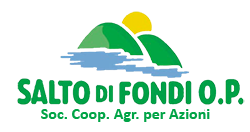The general concept behind this methodology is to treat software projects like clay, not steel. In fact, RAD focuses on the design process and the knowledge that can be gained as a result. Therefore, modern RAD platforms combine a proven architecture, ready-made components that implement typical functionality, and, of course, tools that facilitate rapid development. During the RAD design workshop, users reacted to actual working prototypes, and analysts improved the developed modules based on user responses . Hence, basic prototyping and user involvement in the design process are key steps in the RAD approach.

The developers take the feedback and make the necessary changes. As suggested by the name, RAD is all about rapid development. The feedback is used to make the product live up to the customer’s expectations. Invest in one that fits your business’s budget and requirements to be able to effectively apply this methodology. Better risk management as stakeholders can discuss and address code vulnerabilities while keeping development processes going. That means you’ll end up restarting the development from the beginning every time the client suggests changes.
Build 8.3x faster with Codebots.
The cycle is repeated until the client accepts the prototype. RAD enables developers to work on various independent prototypes parallelly. These are all integrated in the end to create a complete software product. The waterfall model focused on detailed planning at the beginning of each project and creating a well-laid out project roadmap.
- RAD is more suited to the needs of software in the current scenario.
- This E-mail is already registered as a Premium Member with us.
- At some point in the development process, the HR team may also want to handle resignations and terminations in the same application.
- The final phase gives the development team time to move components into a live production environment where all the necessary comprehensive testing or user training takes place.
- During the requirements planning phase, users and analysts meet to define the goals of an application or system and to determine the information requirements arising from those goals.
- When you have clearly defined and scoped out each aspect of the project’s requirements, you can seek management approvals.
In this phase, project managers and developers learn about the client’s business and goals. This includes understanding their business model, needs, and requirements. This phase involves defining what your customer wants and needs. You should also specify the business requirements and any technical constraints. You can leverage the RAD methodology to build both small and large-scale enterprise applications.
User design
When everything is finalized, the final product is created, tested, and delivered to the customer. Rapid Application Development is a subset of Agile development that enables your team to develop software quickly and efficiently. The RAD methodology is an Agile software development methodology that focuses on the fast delivery of applications. Clients assess a solution’s quality https://www.globalcloudteam.com/ based one what they can interact with in a prototype. RAD requires frequent iterations and prototypes, and client’s expect to experience significant progress with each new release, but prototypes are often a facade. While developers are driven to find the best solution, sometimes they must forego best practise on the backend to accelerate development in the front-end prototype.
61) Organizations that utilize the file processing approach spend only 20 percent of development time on maintenance. The principal benefit of the RAD approach is its quick venture conveyance, settling on it an appealing decision for designers working in a quickly changing climate like software development. This reduced product development time, increased productivity and allowed teams to develop great products.
Advantages Of Rapid Application Development
RAD approaches can also help to reduce the overall cost of development by reusing components from previous projects and using lower-cost tools and techniques. Once the project is scoped out, it’s time to jump right into development and build out the user design through various prototype iterations. Although the planning phase is condensed compared to other project management methodologies, this is a critical step for the ultimate success of the project. If your project meets all these criteria, you should consider choosing the RAD model for software development. The development moves to the next stage only when the client approves of the prototypes. 118) Provide a brief overview of the various components of the database environment.
The idea of business process re-engineering was to radically rethink core business processes such as sales and customer support with the new capabilities of Information Technology in mind. RAD was often an essential part of larger business re engineering programs. The rapid prototyping approach of RAD was a key tool to help users and analysts “think out of the box” about innovative ways that technology might radically reinvent a core business process. These practitioners, and those like them, helped RAD gain popularity as an alternative to traditional systems project life cycle approaches. Rapid application development is an agile project management strategy popular in software development.
Building an app? Here are some things to consider
The RAD approach differs from traditional methodology by adhering to a strict deadline. In order for the project to proceed successfully, all stakeholders should be on board with the timeline. With a shorter planning phase and a focus on highly iterative design and construction, RAD teams are able to accomplish more in less time without sacrificing client satisfaction. By reducing planning time and emphasizing rapid development methodologies prototype iterations, RAD allows project managers and stakeholders to accurately measure progress and communicate in real time on evolving issues or changes. This results in greater efficiency, faster development, and effective communication. And project managers have taken notice—particularly among teams in industries like software development where technology, objectives, and targets are in constant flux.
This incurs technical debt, which may cause more corners to be cut when it’s time to deliver a working application as teams race to meet deadlines and avoid refactors. The use of rapidly built prototypes encourages user involvement, testing, and feedback on a live system, rather than attempting to make abstract evaluations of a design document. The nature of this consistent feedback enables developers to adjust models incrementally until project requirements are sufficiently met. Stakeholders communicate and learn through experience, quickly and easily identifying what does and doesn’t work. The rapid nature of releases means errors are far more likely to be discovered earlier, which leads to a reduction in errors and debugging.
Intro to Rapid Application Development (RAD)
As a result, knowledge gained from the development process itself can feed back to the requirements and design of the solution. Plan-driven approaches attempt to rigidly define the requirements, the solution, and the plan to implement it, and have a process that discourages changes. This is the meat and potatoes of the RAD methodology—and what sets it apart from other project management strategies. During this phase, clients work hand-in-hand with developers to ensure their needs are met at every step in the design process. It’s almost like customizable software development where the users can test each prototype of the product, at each stage, to ensure it meets their expectations.
Conversely, the RAD model encourages and prioritizes customer feedback. Developers and users work side by side, voicing opinions and reporting issues throughout development and prototyping stages. User design phase – during this phase, users interact with systems analysts and develop models and prototypes that represent all system processes, inputs, and outputs. The RAD groups or subgroups typically use a combination of joint application design techniques and CASE tools to translate user needs into working models. User design is a continuous interactive process that allows users to understand, modify, and eventually approve a working model of the system that meets their needs. The RAD approach also matured during the period of peak interest in business re-engineering.
Rapid Application Development Methodology
Businesses get a working product delivered in a shorter time frame, and can benefit from early availability while new functionality continues to be released. Requirements include goals, expectations, timelines and budget. The client provides a vision for the product, and in collaboration with other stakeholders, research is conducted to finalize requirements with each stakeholder’s approval. Ensuring every stakeholder is on the same page early in the development cycle assists teams with avoiding miscommunication and costly mistakes.
